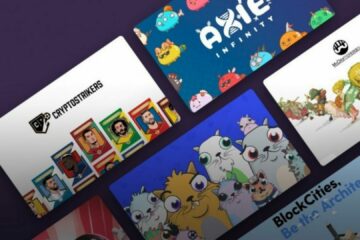You’ve probably heard of NFTs by now. If not, a quick summary: NFTs stand for Non-Fungible Tokens, a unique non-exchangeable element on a blockchain that you get by interacting with a smart contract (mostly ERC-721).
In simpler terms, imagine proof of ownership that is digitized and publicly available. This is what NFTs really are: you get your proof of authenticity based on the history of previous transactions / owners.
This is why NFTs are so perfect for the digital art world. They establish digital originals. Digital images are no longer just PNG files, there are PNG files and a unique address on a blockchain that identifies and describes them. This way the artists can really sell originals online.
How to create an NFT
For me personally, March was also groundbreaking because in NFTs I dared to learn as much as possible about the entire room, read and observe everything that was out there, and tried to catch up with the last 3 years (the first NFT, CryptoPunks, came out in 2017).
OpenSea has become my preferred platform, currently the largest NFT marketplace and very easy to use. All you need is the Metamask wallet (Chrome plugin) to sign in and you can start sending NFTs. To sell them you need to have some ETH in your wallet to pay for the “gas” (transaction fee), but this is easy to overcome too.
It turned out to be the best decision ever. My collection, AIA or Artificial Intelligence Art, was well received and over a hundred people joined in and collected individual pieces.
What’s next for AI Art as NFTs?
That’s just the beginning. There’s so much more to this entire NFT room. The crypto world is super fast and constantly changing – it’s still very early!
I plan to continue researching, buying, and collecting NFTs, whether or not to create new art with artificial intelligence (see my profile on Rarible). There is so much to see and understand, it’s exciting.
I can’t wait to see what comes next: which platforms, which tokens, which art and collectibles will be created and interacted over the next few months and years. As more artists come into the space, blockchains will house the majority of the art created worldwide.
In a previous article I researched NFTs and what the hell it is, but NFTs have become a big buzzword and have gone mainstream outside of the crypto and tech space since Beeple’s $ 69.3 million art sale in March.
This article examines some bespoke trends in the fascinating world of NFTs to get a sense of how they continue to grow to gain wide acceptance across various industries. So get ready for a non-fungible experience.
Brief definition of NFTs
NFTs, or non-fungible tokens, are digital certificates of ownership on a blockchain – NFTs are not cryptocurrencies, cryptos are fungible because they can be exchanged with one another, but one NFT has a unique value and no two NFTs are the same.
According to Merriam Webster, an NFT is a unique digital identifier that cannot be copied, replaced or broken down, recorded on a blockchain and used to certify authenticity and ownership (above a certain digital asset and specific rights).
The most popular NFTs are on the Ethereum blockchain, although other blockchains may have NFTs, Ethereum has been the most popular NFT platform to date, but blockchains like Flow, Binance Smart Chain, Solana, Polygon, and even Cardano have unique ways to be efficient with NFTs being .
Top trends in the world of non-fungible tokens
Non-fungible tokens exploded in 2020, in the middle of the pandemic, but exploded even further in 2021 – total NFT sales in 2020 were $ 250 million, compared to $ 2 billion in the first quarter of 2021.
According to Cloudward, a total of $ 2 billion in NFT sales were made in the first quarter of 2021, 131 times its sales value in the first quarter of 2020, and as NFTs keep growing, it is only attracting more buyers – so it could be be worth even more in the future.
Lots of exciting things are happening in the NFT space, some people believe that NFTs, more than anything, help bring more people to the crypto side of life.
The new hype of the art market is called CryptoArt. An industry has been booming since the end of last year, attracting collectors from the technology sector who made money through Bitcoin. According to the press agency AFP, 2.5 billion dollars are said to have been turned over in the first five months of 2021 with NFTs, non-fungible tokens. These are digital one-offs certified by encryption technology.
CryptoPunks can currently also be seen on the LED screen of the Center for Art and Media in Karlsruhe. They are part of the small but Germany-wide unique CryptoArt collection of the ZKM. With the exhibition title “It’s not about money”, the state research institute deliberately differentiates itself from the art market hype. “Three years ago the CryptoPunks still cost around 90 euros,” says Daniel Heiss.
For the inventors it was just a project to find out how multiple variations of an image could be produced with the simplest of means. “Whereby many also perceive this as art – the art of generating a maximum number of variations with 24 by 24 pixels.” Together with the ZKM collection manager Margit Rosen, the software developer put together the LED show for the outdoor area. More sophisticated NFTs such as Hideki Tsukamoto’s “Singularity” or Dmitri Cherniak’s “Ringers” can also be seen in the design.
Daniel Heiss has long been concerned with the new technology that gives digital art the status of originals and offers artists an opportunity to earn money through smart contracts. For him, the decentrally organized system of the blockchain is a “revolutionary technology” that has many advantages, but of course can also be misused.
“It started very idealistically,” says the software developer trained at KIT Karlsruhe. Bitcoin is an issue in both left and right circles because it enables anonymous payments. One must ask oneself whether there should be such anonymous communication in principle, he replies to the objection that the technology is currently being massively misused for criminal hacker attacks. Blockchain is just as available to dissidents as it is to terrorists. Wikileaks was able to collect donations in this way via Bitcoin.
Margit Rosen refers to the UN refugee agency UNHCR, which uses Bitcoin to organize food allocations in refugee camps, thereby saving millions of euros in bank fees. There are also other humanitarian projects that aim to give stateless refugees a blockchain identity in which academic degrees or training certificates are stored. But she also admits that far too many criminals are abusing the technology.
NFTs as part of the culture
Entry into Bitcoin is usually associated with administrative hurdles for a government institution. The ZKM experimented with the process for the first time in 2017 as part of the “Open Codes” exhibition. Daniel Heiss had set up a bitcoin mining farm and mined bitcoins together with visitors in workshops. The ZKM used the credit to purchase its first NFTs – at that time for little money.
The art scholar is more interested in the sociological phenomena of the crypto world. When a new technical tool comes into the world, it doesn’t just change social relationships and the economy. If the first posted tweet, an icon of Internet culture, is highly traded as an NFT, a new social group will assert its claim to cultural appreciation.



0 Comments